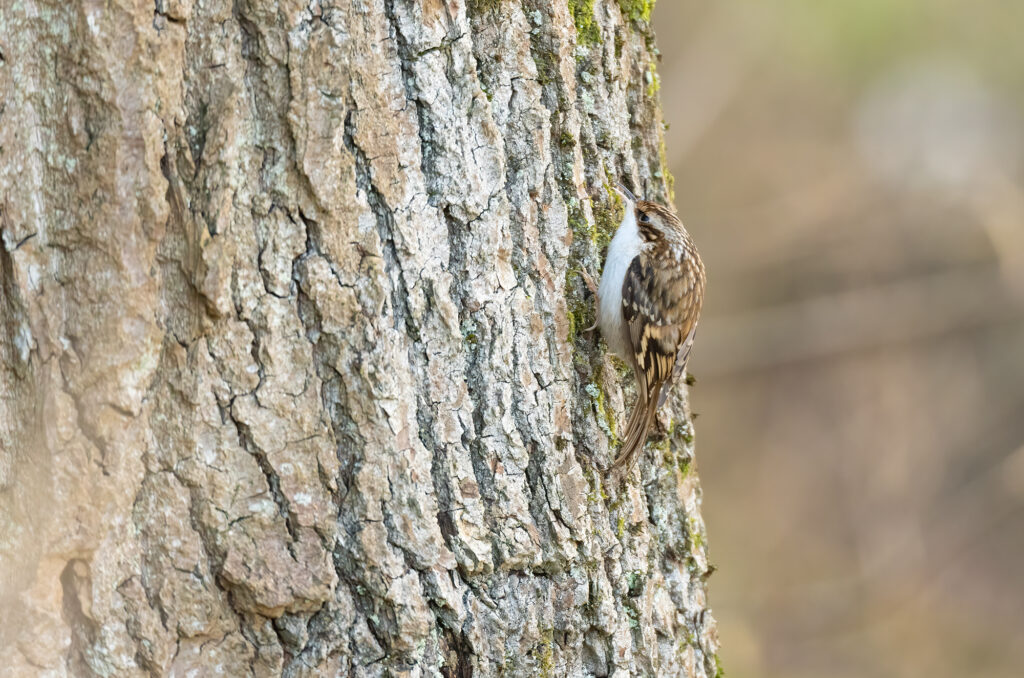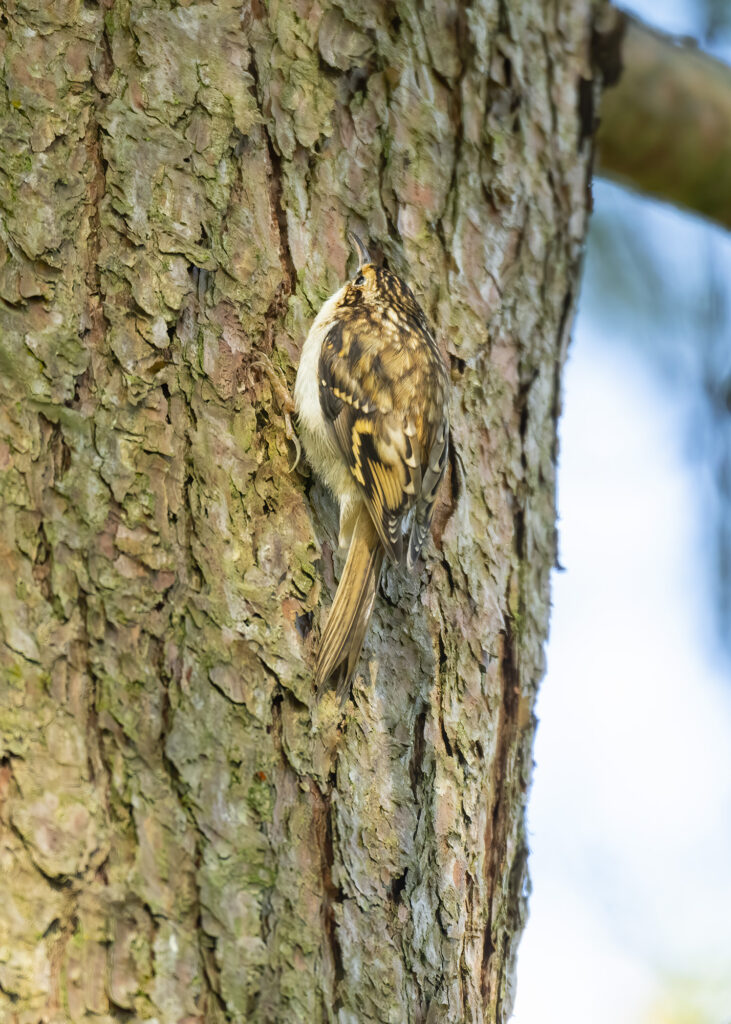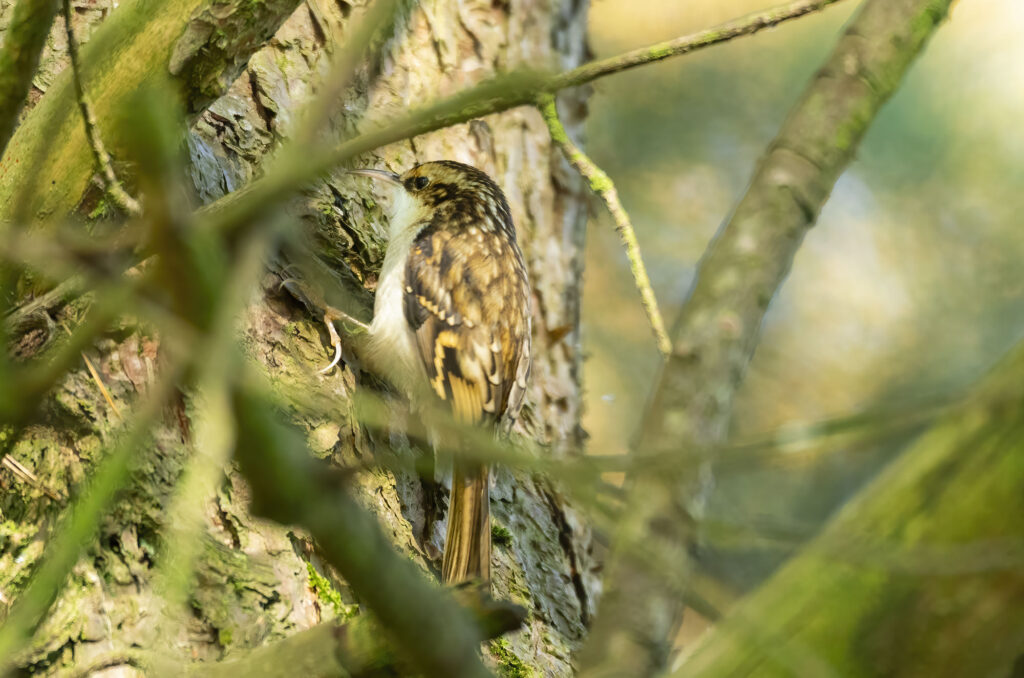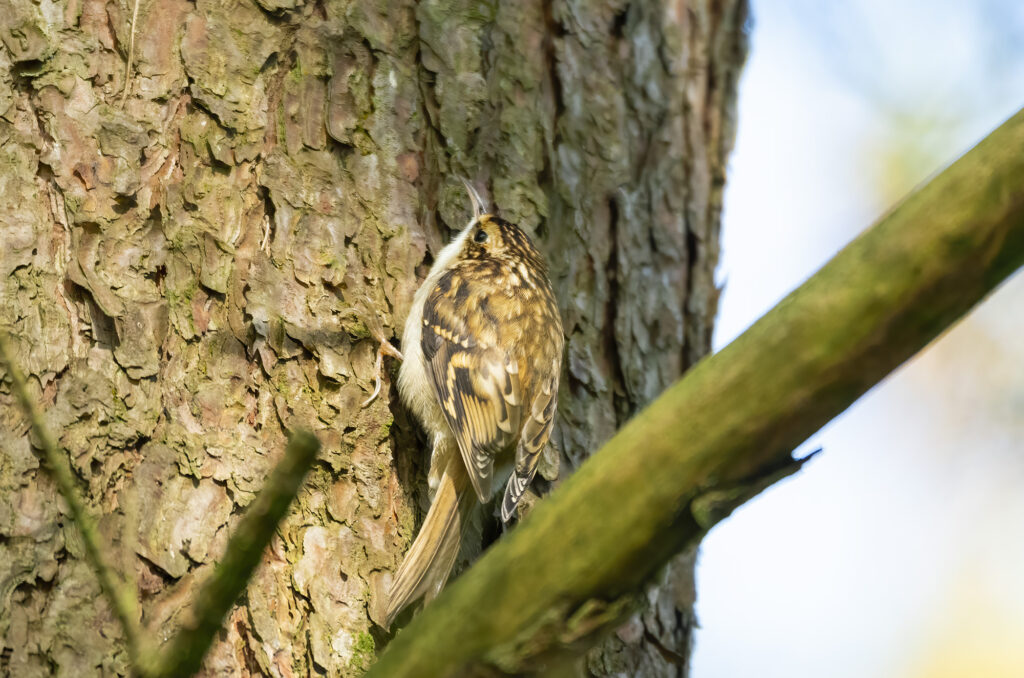As I sat in the shade of the trees in my usual spot, hoping for roe deer to appear, there was an unusual noise. An insistent but quiet and high-pitched ‘see-see-see’ in the canopy. I now hear it regularly on my daily walks through the woods. It’s the sign of a common bird that is a struggle to spot – the treecreeper.
Mouse bird. A squeak and a flash of a long brown tail betray its rodent-like presence. A local West Country name for the treecreeper is the ‘tree mouse’. This quiet and unobtrusive species becomes instantly fascinating when you see how they climb up tree trunks – the antithesis of the nuthatch – using their long, sharp beaks to pick out insects from the cracks and crevices. The image below shows the long, curved toes that help this species cling to the bark and the long, stiff tail feathers that provide extra support when pushed against the tree trunk.

On a walk a few days ago, I spent some time watching the bird below as it spiralled up a trunk. I took my time to get close, as I have had many experiences of accidentally flushing these birds or causing them to flit around to the other side of the tree and out of sight. As you can see, they are well-camouflaged in their environment, with mottled brown feathers. When disturbed, they will also often freeze and become indistinguishable from the patterns on the bark. Their secretive behaviour is often cemented by tricky light conditions, requiring a photographer to deal with the shadows and harsh light that comes with shooting into the trees.

Ok, so that’s the bad news for photographing treecreepers. The good news is that they are active during the day and have small territories, which they tend to stay within. For some birds, this may be only one tree. So, once you have found one, you should have regular opportunities to capture images. Their behaviour is repetitive, so staying patient in the same spot should yield results.

As you can see, I’ve already managed to get some images of treecreepers on tree trunks during brief encounters with them. Having found a reliable location, I’ll now focus on capturing images that show more treecreeper behaviour. I am keen to photograph them flying down the tree, which I hope will be easier in winter when there is less leaf cover to obscure their activities. I also want to photograph them delivering food to their young during the nesting season if I can find an active nest where the parents won’t be disturbed by my presence.

The treecreeper may look like a wee timorous beastie, but it is a master of disguise and making the most of its environment.

